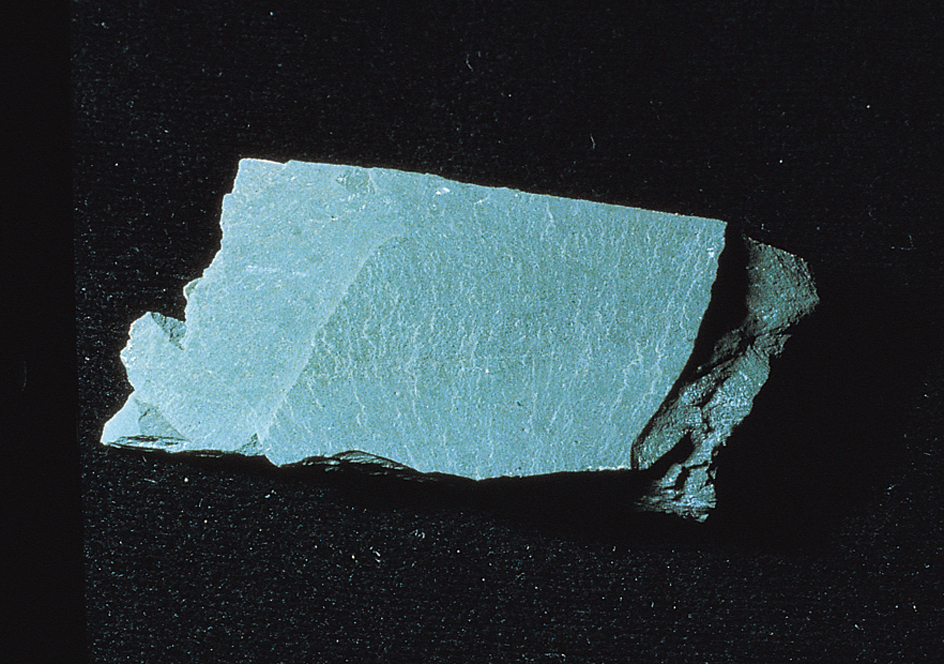Slate is a fine-grained rock. It can easily be split into thin slabs. Slate consists mainly of grains of mica, chlorite, and quartz. It may also have calcite, pyrite, hematite, and other minerals. Most slate is gray to black in color. But the rock may be red or green, depending on its mineral content.

Slate is a metamorphic rock (see Metamorphic rock). Most slate is formed below Earth’s surface by changes in the makeup of shale, a sedimentary rock (see Sedimentary rock; Shale). Shale primarily consists of clay minerals and of fine particles of quartz. When shale is buried in Earth’s crust, heat from deep underground or nearby magma (molten rock) changes the clay minerals in shale to mica and chlorite. Downward pressure caused by burial and deformation due to crustal movement squeezes the mica and other platy (flaky) minerals and forms them into parallel layers.
Much slate occurs in Scotland, Wales, France, southern Germany, and the Northeastern United States. Builders use slate for roofing and flagstones because it is weatherproof and long-lasting. Slate is also used to trim the fronts and lobbies of buildings. In addition, it is used for pool tables.
